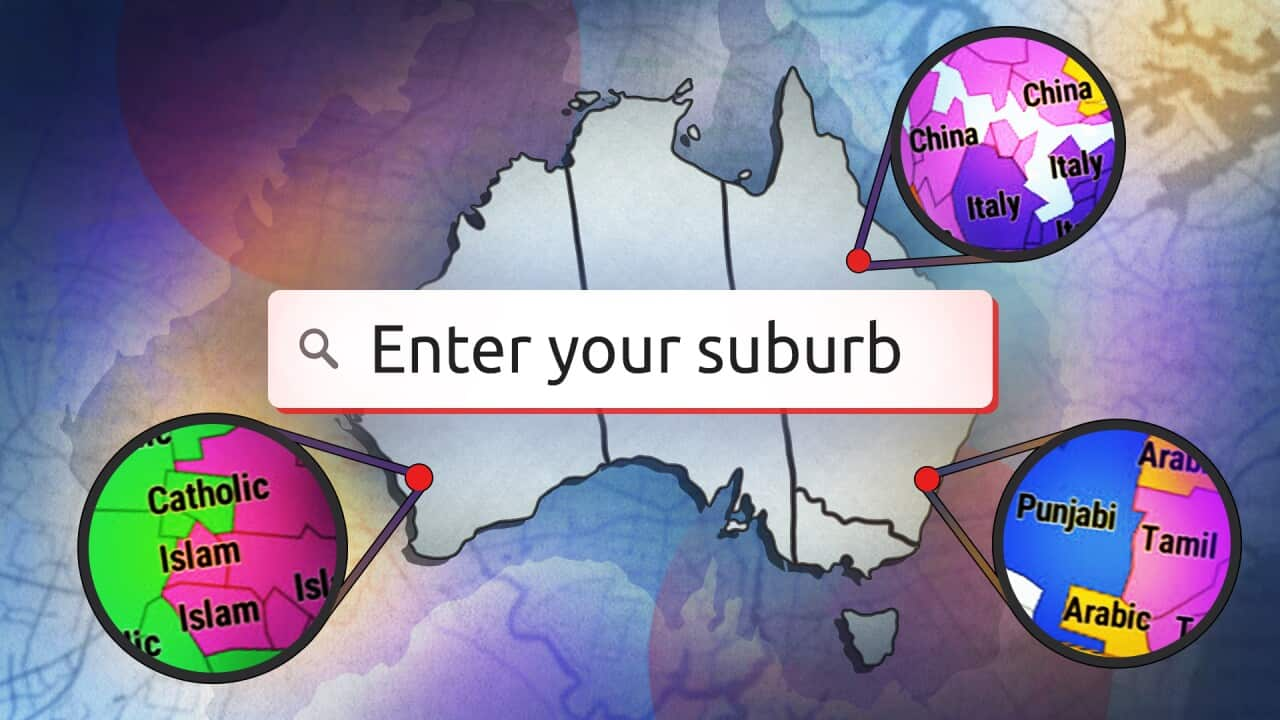Hundreds of people in Australia will be worshipping their dogs by adorning them with flower garlands and putting red tika on their heads on Monday.
The tradition is part of the Nepali version of Diwali, called , which features activities to celebrate the five-day festival of light.
And the celebration is set to get even more popular in Australia as the number of people from Nepal – the country's fastest-growing migrant community, according to the latest Census – continues to grow.
Tihar began on Saturday, while began on Monday.
READ MORE

How multicultural is your suburb?
executive producer Abhas Parajuli said Tihar is celebrated differently to Diwali, and that includes . On the second day, for example, people worship dogs, which represent all four-legged animals.
Due to lunar calendar discrepancies this year, some Nepali people will celebrate this on Monday, while others may choose Tuesday.
The other days are used to worship other creatures, such as crows, which represent all birds, as well as cows.

Dogs are worshipped as part of Tihar festival rituals. Source: SBS News / Sarah Maunder
When Parajuli arrived in Australia in the mid-2000s it was rare to see even an Indian person in the streets of Melbourne, where he still lives, he said. The Nepali community is now the fastest-growing migrant community in Australia, and it has brought many new traditions, perspectives and expertise.
"We have a saying in Nepal, that we have 365 days in a year and we celebrate 364 days," he said.
"It's a very celebratory community, our culture is every day you celebrate something or other, and very quirky things too from an Australian perspective, like worshipping a crow, a cow, a dog, during Tihar."

The number of Nepal-born people in Australia has increased since 2001. Source: SBS News
Around 48 per cent of the community live in Sydney, 15 per cent in Melbourne, six per cent in Adelaide, five per cent in Brisbane and Canberra, and three per cent in Perth and Hobart. Another two per cent live in Darwin and one per cent live in Launceston. There are also small communities, consisting of hundreds of people, living in regional areas such as Newcastle, Toowoomba, Dubbo, Cairns and Bowral.

The top 10 suburbs for Nepal-born communities in Australia Source: SBS News
"We have got three geographic areas in our country: The Himalayas, the hilly area, and the plains," Prayas told SBS News at the weekend in Launceston.

Prayas Karki and Gita Chhetri are originally from Nepal. Source: SBS News / Sarah Maunder
"We are far from our home country, but we still try to manage our time, taking a day of annual leave off work so we can spend time together with family and friends, eating, playing cards and enjoying the moment."
Demographer Dr Liz Allen from the Australian National University said that historically there had only been a small number of Nepali people in Australia and this made the growth seem more substantial.
"The rate of growth can look quite high - because it's coming from a low number," she said.
"But there's undeniably a trend towards increased intake of people from Nepal."
Parajuli came to Australia to study and ended up staying for more than 17 years.
He said young Nepali people had tended to go to the United States or Europe after finishing high school to further their education but he believes Australia has become a more popular destination in the past 10 years or so because of the easier path to permanent residency, work opportunities and the laid back lifestyle.
We have 365 days in a year and we celebrate 364 days.- Abhas Parajuli, SBS Nepali
Parajuli said Australia's skilled migration program had also meant a lot of highly qualified engineers, doctors and nurses had chosen to settle here.
He believes the civil war in Nepal between 1996 and 2006 played a part in increasing migration because many Nepali people who had previously lived in remote villages in the mountains were driven into urban centres like Kathmandu, and realised there were other opportunities they could pursue.
"They obviously went overseas, earned money, and that kind of started this whole thing," he said.
States including Tasmania have become popular thanks to the , the fact that it's cheaper to study there and there's less competition for places compared to bigger cities like Sydney and Melbourne, Parajuli said.

The number of people speaking Nepali in Tasmania, Hobart and Launceston has grown since 2011. Source: SBS News
Parajuli said people also tended to go where they had friends or family. He said Nepali people in Melbourne tended to be from midwestern Nepal, and in Sydney, there are a lot of people from Kathmandu. Tasmania has a mix of people from many different areas.

At the Bhashalaya school in Tasmania, children learn about the Nepali language, cultural traditions and festivals, including Tihar. Source: SBS News / Sarah Maunder
Sandesh Shrestha is the President of the NSNT, and said before the school was established, children and grandparents in the community were struggling to communicate with each other.
"Now, [thanks to the school] we can see lots of children, they are talking to their grandparents in the Nepali language," he said.
Celebrations bring the community together
Another popular festival for the Nepali community is Teej, which was celebrated earlier this year and is for their husband's good health, and for unmarried women to fast for a good future partner.
"It's kind of like a free pass for the ladies, but then they don't eat anything and a lot of people don't drink anything, but they still dance and enjoy the day," Parajuli said.
But as attitudes have changed over time, Parajuli said the festival has evolved to become a festival of women, with women meeting up with female friends, sisters, mothers and other important women in their lives for separate events featuring dancing and food. Some men now even participate in the fasting.

Nepali women dancing as they celebrate Teej in Sydney on 30 August 2022. Source: SBS News / Dinita Rishal
"Because in Australia you don't get a day off for celebrating Teej, so you find these community events on the weekends to go and enjoy, just be with your girlfriends, just be with your sisters," he said.
"You dress up in really regal clothes, you put on all the jewellery that you have, and then you show off with your friends and families, and you just enjoy dancing, and eat."
Would you like to share your story with SBS News? Email [email protected]









